IBM Infoprint 1759 MFP Color 4886
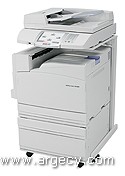
New
4886-DN1 39V2157 (New)
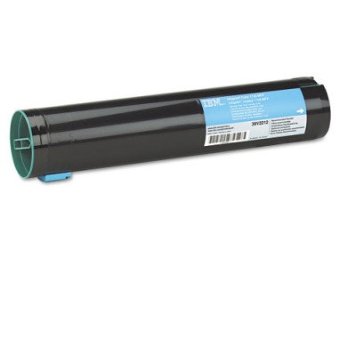 Toner | |
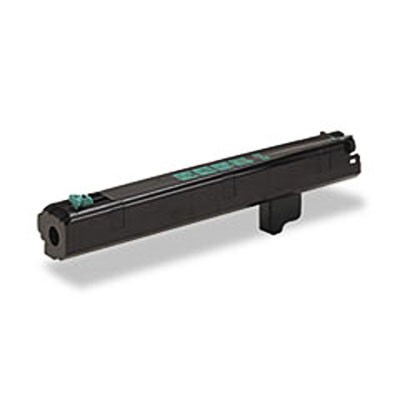 39V2279 Photoconductor | |
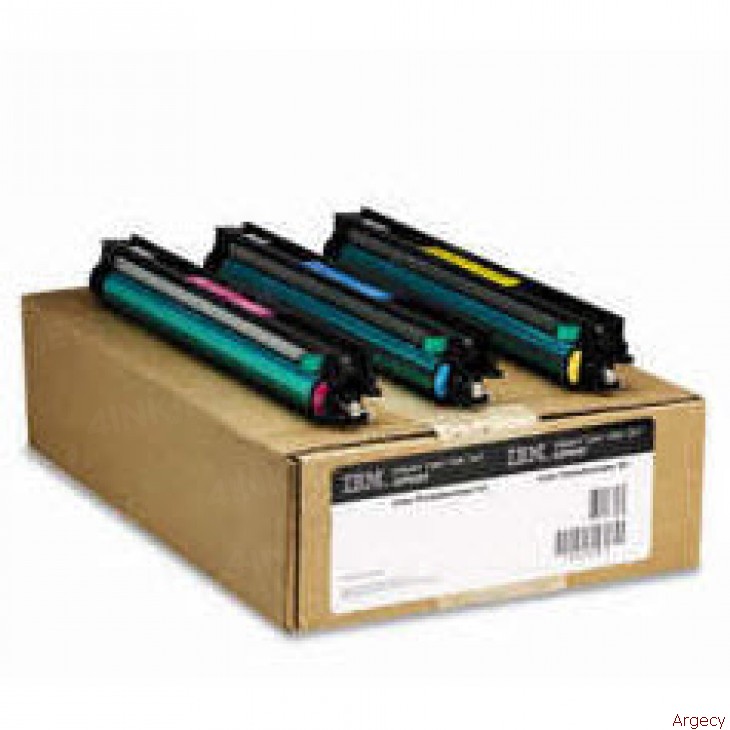 39V2280 Photoconductor | |
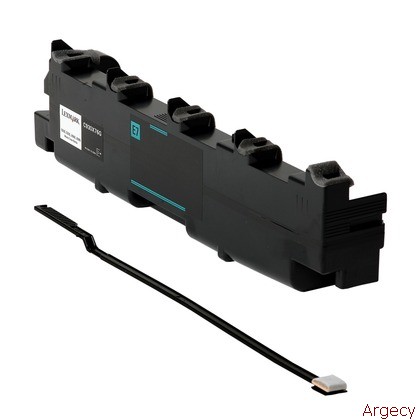 39V2281 Waste Toner Bottle | |
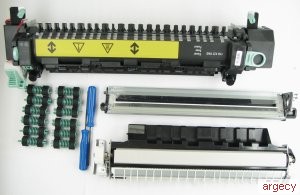 39V2320 100K Maintenance Kit | |
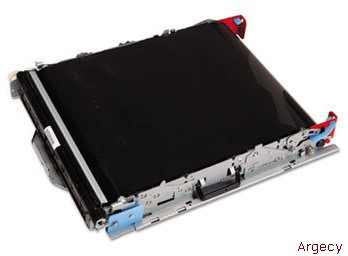 39V2322 600K Maintenance Kit | |
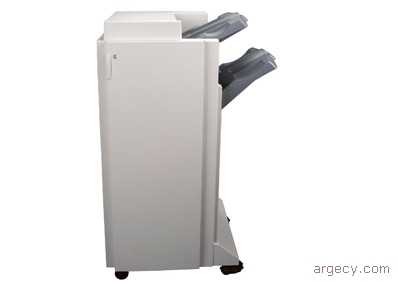 39V2288 4621 | |
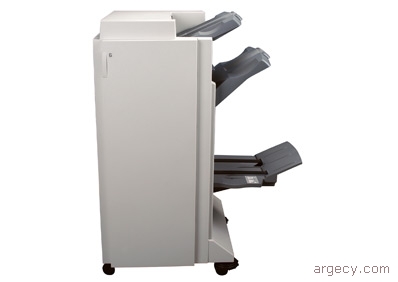 39V2289 4622 | |
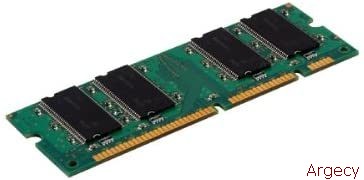 75P6986 4390 | |
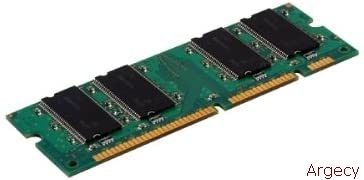 75P6987 4391 | |
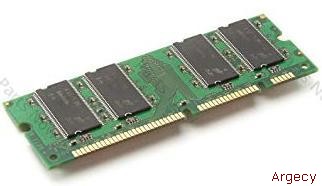 75p6988 4392 | 75P6988 Infoprint Brand 512 MB DIMM New 75P6988 (New) Retired, no longer available: Contact for alternatives |
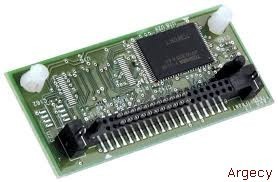 75P6989 4038 | |
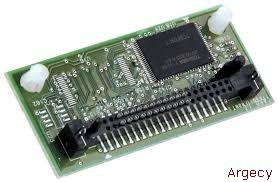 75P6990 4040 | |
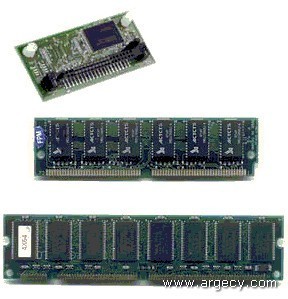 39V2299 4820 | |
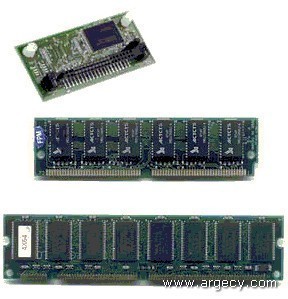 39V2300 4870 | |
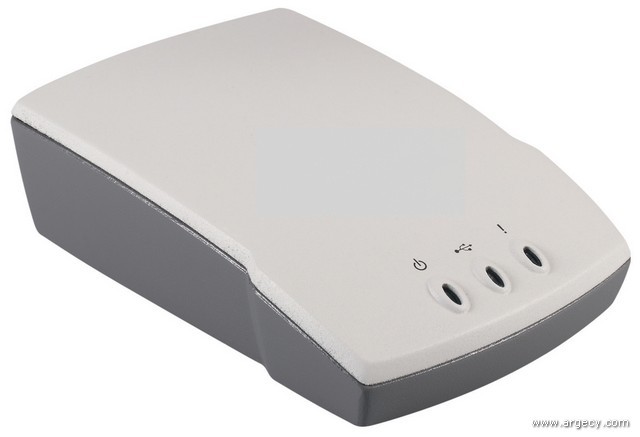 39V1524 4163 | |
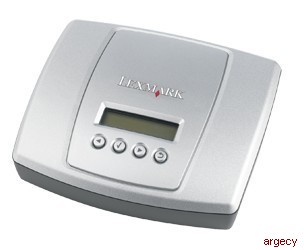 39V1525 4164 | |
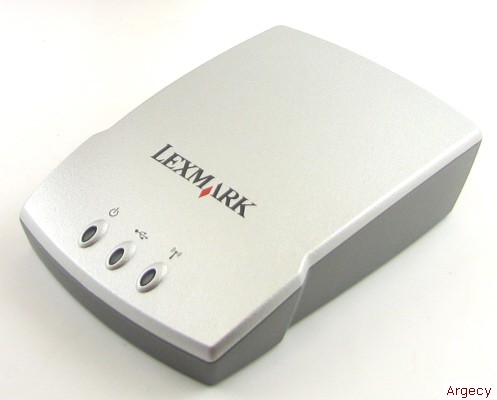 39V1526 4165 | |
 75P6854 4190 | |
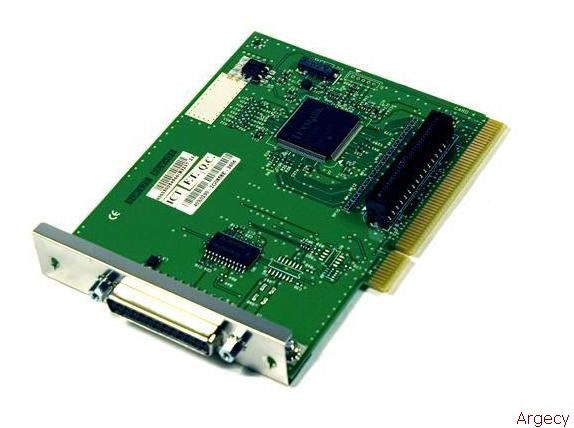 39V03264138 | |
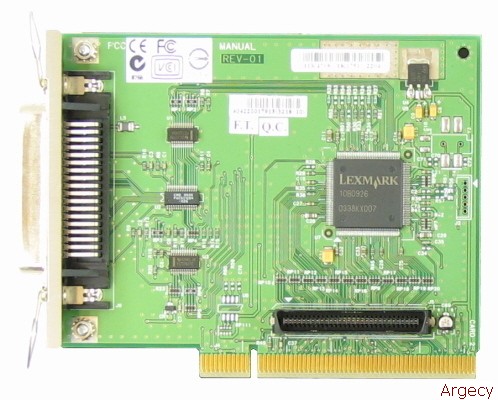 39V0327 4139 | |
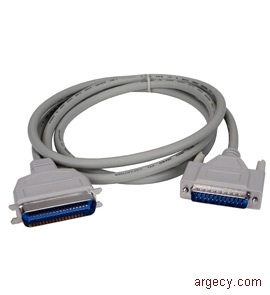 75P7029 4180 | |
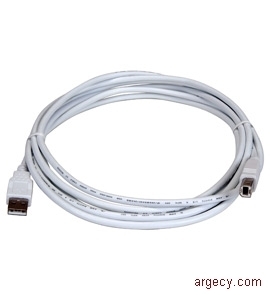 75P7030 4184 |
Model Abstract 4886-DN1
The InfoPrint 4886 1759 MFP Model DN1 has 512 MB standard memory, 1024 MB maximum memory, gigabit Ethernet standard, USB port standard, 1.25 GHz processor, hard drive, modem, and language support.
Features for the InfoPrint Color 1759 MFP and 1769 MFP include:
- Encrypted PDF
- 12 x 19 in. paper size
- Two finisher options (standard finisher and booklet finisher)
- Copy to or from universal size
- Booklet cover page
- Hard button for home
- Mixed originals improvement
- Color balance
- Mirror image
- Margin shift
- Edge-to-edge scan
The InfoPrint Color 1759 MFP supports up to 30 pages per minute (ppm)(1) color for letter/A4 size and 40 ppm(1) monochrome for letter/A4 size.
InfoPrint Color 1759 MFP and 1769 MFP are all-in-one multifunction printers (MFP) that provide color print, copy, scan, and fax functions. The table below summarizes both products:
Standard Maximum Gigabit Hard
Models memory memory Ethernet USB Port Processor drive Modem
-------- -------- ------- -------- -------- --------- ----- -----
dn1, dn2 512 MB 1024 MB Standard Standard 1.25 GHz Yes Yes
The InfoPrint Color 1759 MFP includes two 520-sheet drawers and a 100-sheet multipurpose feeder for a total input capacity of 1,140-sheets standard. Standard output capacity is 400 sheets (without finisher). Duplex is standard and optional finishers are available.
Note: (1) Exact print speed varies depending on document complexity, system configuration, software applications, driver, and printer status.
Memory
Both the InfoPrint Color 1759 MFP and 1769 MFP include 512 MB of memory standard and can support up to 1024 MB maximum memory with optional 128 MB, 256 MB, and 512 MB DIMMs. Both printers have one slot for flash memory. One 32 MB or 64 MB flash memory option is supported.
Two slots are available for memory and application solution features. Both slots may be used for memory or one slot for memory and one slot for application solution features such as IPDS or bar code.
A hard drive (80 GB+) comes standard.
Network connections
Gigabit Ethernet is standard on all models.
Usage rates
Maximum monthly usage for printing:
- InfoPrint Color 1759 MFP: 150,000 impressions
IPS does not recommend printing to these monthly maximums on a consistent basis.
Print quality
The resolution of both printers is 2400 Image Quality.
Both printers have five user selectable toner darkness settings to balance print darkness and toner savings. The higher the setting, the darker the print. Within the range of print darkness settings, up to 50% toner savings can be realized from the factory default setting of 4. The toner darkness setting is available through the operator panel under the Quality menu and is also accessible from the print driver.
Font support
The printers' resident fonts include support for the following:
Emulation Number of scalable fonts Number of bitmapped fonts
------------ ------------------------ -------------------------
PCL 6 89 2
PostScript 3 158 0
PPDS 39 5
Operator panel
The InfoPrint Color 1759 MFP and 1769 MFP operator panel has:
- Touch-sensitive GUI plus 17 "hard" buttons and one LED
- 8.0-inch diagonal color LCD (TFT) with backlight
- Expanded language support
MFP
Scanner
------------------------------------------------------------------------
Scanner Type White Xenon lamp
Scan Technology Charge Coupled Device (CCD)
Number of Light Sources One
Color bit depth 24
Max Optical Resolution 600 x 600 dpi
Scan Area - Flatbed Max. 11.7 x 17.0 in (297 x 432 mm)
Scanner ADF
------------------------------------------------------------------------
ADF Type C-Path (duplexing)
Optical Resolution ADF Max. 600 x 600 dpi
(Mono)
Optical Resolution ADF Max. 600 x 300 dpi
(Color)
Document Capacity 75 Sheets 20 lb. (80 g/m2) Bond
Media Weight Max. 32 lb (128 g/m2)
Min. 16 lb (60 g/m2)(50 g/m2 for duplex mode)
Speed-Maximum Mono: Up to 45 sides per minute (spm)
(Letter/A4 long-edge feed) Color: Up to 45 spm
Scan Area - ADF Max. 11.7 x 17.0 in (297 x 432 mm)
Min. 5.5 x 8.25 in (139.7 x 210 mm)
Enlargement/Reduction 25% to 400%
Capability
IPDS Function
IPDS function supports these Object container objects:
- TrueType Fonts
- TrueType Fonts Collection
- JPEG (JFIF) Objects
- IOCA Tile Objects
Font linking is supported with TrueType fonts. Font collections are not fully supported on these printers. Only characters located in the first 64K area of unicode range are supported.
Telecommunications approval
These products may connect to a Public Telecommunications Network, as such by country regulations and laws. These products may require Telecommunications Approval through country Telecommunications Authority prior to sale.
Features
InfoPrint Color 1759 MFP and 1769 MFP support the following features:
Part
Number Description
------- ------------------------------
39V2288 Standard Finisher (3 hole)
39V2289 Booklet Finisher (3 hole)
75P6986 128 MB Memory DIMM
75P6987 256 MB Memory DIMM
75P6988 512 MB Memory DIMM
75P6989 32 MB Flash Memory
75P6990 64 MB Flash Memory
39V2299 Card for IPDS and SCS/TNe
39V2300 Bar Code Card
39V1524 Ethernet 10/100BaseTX (1 USB port)
39V1525 Ethernet 1000BaseTX (4 USB port)
39V1526 Ethernet 10/100BaseTX (1 parallel port)
75P6854 802.11g Wireless to USB
75P7029 10 ft. Parallel Cable
75P7030 2-meter USB Cable
39V0326 Serial Interface Card
39V0327 Parallel 1284-B Interface Card
Accessibility by people with disabilities
For hardware offerings
The following features support use by people with disabilities:
- Controls and latches are operable with one hand and minimal dexterity.
- Keys are discernible by touch without activating them.
- The display, controls, latches, and levers are accessible to someone in a wheel chair.
- Color is used as an enhancement for conveying information, as well as an additional method of distinguishing between buttons, controls, and latches.
| |
| Models |
All products in this announcement are customer setup.
Devices Supported
None.
Model Conversions
Not available.
Maximum Print Speed and Performance
Both products support the maximum print speeds listed below. Actual performance depends on:
- Interface to host (parallel, serial, USB or network)
- Host system and application
- Complexity and content of the page
- Certain options added to or selected with the MFP
- Available memory in the MFP
- Media size, media type and tray source
- Print Resolution
The table below specifies throughput based on resolution and media size. For a complete range of media sizes supported, see Media Supported.
InfoPrint Color 1759 MFP
Monochrome IPM (Impressions per minute):
Print Mono Color
Media Mode Tray 1 MFP Tray 1 MFP
--------------- ------- ------ ------- ------ --------
A4 LEF Simplex 40.0 34.0 30.0 29.8
8.5"x11" LEF Duplex 37.1 35.0 29.8 31.0
B5 LEF Simplex 45.6 34.0 40.0 29.5
Executive LEF Duplex 21.7 21.5 18.9 18.6
8.5"x5.5" LEF Simplex 45.0 34.0 39.6 29.5
A5 SEF Duplex 21.7 21.5 19.3 17.7
A4 LEF Simplex 33.6 N/A 29.8 N/A
8.5"x11" SEF Duplex 20.2 N/A 18.4 N/A
B5 SEF
B4 SEF Simplex 26.9 21.5 23.8 20.0
8.5"x13" SEF Duplex 16.4 15.6 15.8 14.9
8.5"x14" SEF
A3 SEF Simplex 22.5 21.3 18.8 20.0
11"x17" SEF Duplex 16.2 15.3 14.9 14.9
The table below specifies time to first print:
InfoPrint Color 1759 MFP
Color Mono
--------- --------
Ready/Standby 9.1 sec 5.2 sec
Sleep 1 29.3 sec 24.6 sec
Power saver 69.7 sec 60.6 sec
Power Off 91.8 sec 75.4 sec
All measurements in simplex mode.
Print Quality
General Statement on Print Quality
Due to the print technology, paper designed for use with xerographic copiers should provide satisfactory print quality and feed reliability. Other types of supplies may be suitable. It is recommended that users test any particular brand for suitability to their applications. Refer to MFP User's Guide for additional media specifications.
Copy Specific Specifications
Detailed first copy out times
Monochrome:
Input Mode Size Copy Start State Copy Time
--------- ------ --------- ---------------- ---------
ADF Mono Letter/A4 StandBy/Ready 7.4 sec
Flatbed Mono Letter/A4 StandBy/Ready 6.7 sec
ADF Color Letter/A4 StandBy/Ready 9.2 sec
Flatbed Color Letter/A4 StandBy/Ready 8.8 sec
ADF Mono Letter/A4 PowerSaver 66.0 sec
Flatbed Mono Letter/A4 PowerSaver 69.0 sec
ADF Color Letter/A4 PowerSaver 68.0 sec
Flatbed Color Letter/A4 PowerSaver 71.0 sec
Note: Copy speeds are included in the print speeds table
Copy Features and Copy Quality Settings
The following settings are available to enhance copy quality and/or adjust output:
- Background removal
- Contrast
- Color correction (print)
- Color adjust (print)
- Toner darkness (print)
- Color saver (print)
- Saturation (print)
- Color balance
- Shadow detail
- Mirror image
- Margin shift
- Edge erase
- Darkness
- 25-400% enlargement or reduction
Other Copy Features
- Support for mixed letter/legal and other mixed pairs
- Custom job (job build) from ADF and/or flatbed
Fax Specific Specifications
Fax Performance
The following table summarizes performance numbers for the InfoPrint Color 1759 MFP and 1769 MFP.
InfoPrint Color 1759 MFP and 1769 MFP Performance
-------------------------------------- --------------------------------
(1) Fax Send Transmission Speed - 12KB 3 spp (seconds per page)
(96K Bits) at 33.6KBS
Fax Storage
Total hard drive space (80 GB)
Less 1 GB or a total of 4,096
fax jobs
Maximum Group Speed Dials Base on the number of digits in
each raw or group speed dial - no
exact limit
Fax ReDirect E-mail Address Storage 512 characters
Note: (1) Based on ITU-T Test Chart #1 - Text Format Business Letter.
Fax and Telecom Compatibility Information
FAX Compatibility
-Line Connection PSTN or Analog PABX (RJ-11)
-ITU Compatibility Group 3 / ECM
Standard Resolution 200x100 (Send) 200x100, 204x98 (Receive)
Fine Resolution 200x200 (Send) 200x200, 204x196 (Receive)
SuperFine Resolution 300x300 (Send) 300x300, 204x391 (Receive)
UltraFine Resolution 600x600 (Send) 400x400, 408x391, 600x600
(Receive)
-Modem
Speed - Standard Max is 33,600 bps, V.34
Half-Duplex
Error Correction Method ITU T.30
Automatic Train Down Yes
-Communications
The modem satisfies the require-
ments specified in ITU-T (CCITT)
recommendations V.34 half-duplex,
V.17, V.33, V.29, V.27 ter, V.21
and meets the binary signaling
requirements of V.8 and T.30 with
annex F.
Protocol: ITU T.30
Modulation Type: ITU V.34, V.17, V.29,
V.27ter
Tonal Signal: ITU V.8, V.21 T.30
Data Compression/Compression Memory T.4 1D Modified Huffman
Encoding
T.4 2D Modified Read
Encoding
T.6 Modified Modified Read
Encoding
Modem Speeds: 33600, 31200, 28800,
26400, 21600, 19200,
16800, 14400, 12000,
9600, 7200, 4800, 2400bps
Receive Level: -9dBm -43 dBm
Modem Chipset: Conexant SFX336 Plus
Output Level: Adjustable: -9dBm~-15dBm
Initial Setting: Country Dependent
Line Interface Section
-Modular Plug: RJ-11C
OutBand Signal Level: Guaranteed North American
standard and Europe PTT
-Insulation
Resistance
(250VDC)
Tip - Ring: Higher than 5 Meg Ohms
Tip - Ring-GND Higher than 5 Meg Ohms
Ring Detection: Complies with all
regulatory requirements
Dialing Characteristics
-Dial Pulse
Not Supported
1) DTMF
Coding Format
1209 Hz 1336 Hz 1477 Hz
697 Hz 1 2 3
770 Hz 4 5 6
852 Hz 7 8 9
941 Hz * 0 #
Retry No Answer 1 Additional Retry
(also if not a fax at the far end)
Busy 0 to 9 Additional Tries
(user programmable, factory default is 5)
Frequency 1 to 200 minutes
(user programmable, factory default is 3 minutes)
Fax Features
- Block Junk Fax Function:
- Block Junk Fax Function = Yes.
- Blocks junk faxes based on caller ID and remote station ID.
- Caller ID Support = Yes
- Fax Forwarding
- Incoming faxes may be forwarded to another fax machine, e-mail, FTP, or LDSS. In order to fax to LDSS, LDSS is required.
- HalfTone:
- InfoPrint Color 1759 MFP and 1769 MFP does not support 8-bit grayfax.
- Max Broadcast Locations:
- Maximum Broadcast locations is 400. Note: each number in a group fax is a location.
- Group Fax (Broadcasting)
- Broadcasting is available on the InfoPrint Color 1759 MFP and 1769 MFP. It can broadcast to 46 locations (based on 10 digit numbers with a max of 512 characters). This function is supported by Speed Dials (shortcuts) and the touch screen menus for Group Fax (Broadcasting).
- Manual Fax
- Manual Fax capability available on InfoPrint Color 1759 MFP and 1769 MFP.
- Fax from PC
- Fax from PC is supported using Postscript driver for both local and network attach modes.
- Fax Shortcuts
- Maximum characters per shortcut = 512 characters
- Speed Dials
- The number of SpeedDials/Shortcuts is greater than 1800, based on a 10-digit phone number.
- Fax Content
- Text
- Text/Photo
- Photograph
- Fax Preservation
- LDAP Lookup
- LDAP Address Lookup capability on the InfoPrint Color 1759 MFP and 1769 MFP
- Support for mixed letter/legal
- Custom job (job build) from ADF and/or flatbed
Scan Specific Specifications
Scan Performance
The following table summarizes performance numbers for the InfoPrint Color 1759 MFP and 1769 MFP.
Scan Speed
-Sides Per Minute (SPM) (Mono Simplex) Letter - 45
A4 - 45
-Sides Per Minute (SPM) (Color Simplex) Letter - 45
A4 - 45
-Sides Per Minute (SPM) (Mono Duplex) Letter - 11.5
A4 - 11.6
-Sides Per Minute (SPM)(Color Duplex) Letter - 11.5
A4 - 11.6
Scan Features
- Scan preview
- Support for mixed letter/legal
- Custom job (job build) from ADF and/or flatbed
- Duplex Scan
- Destinations:
- FTP
- Windows network folder (requires installing embedded scan to folder application)
- LDSS
- Network connected PC
- USB flash memory drive (thumb drive)
- Network TWAIN Drivers available
- File Formats
- TIFF
- JPG
- Encrypted PDF
Security Features
This product contains several standard and optional features and functions that improve or enhance the security of the device. See User Guide for more information.
Available MFP security features
Apply an administrative password to restrict unauthorized users from making changes to the MFP configuration.
Activate internal user authentication so users are required to confirm prior to performing sensitive operations such as scan-to-e-mail and scan-to-fax. This process that unauthorized individuals cannot use these functions.
Disable the driver to fax option.
Disable all unneeded protocols and network communication paths by which the MFP can be configured.
MFP touch screen lock function
The MFP touch screen lock function disables the MFP functions such as copy and scan-to-email. This helps secure the MFP from unauthorized use when the office is idle or unattended. An administrator must unable the function and set the password for use with the function. Any user may then lock the MFP touch screen or unlock the touch screen using the password.
Setting security using the Embedded Web Server (EWS)
To enhance the security of network communications and MFP configuration, use the advanced security options. These features are available through the Web page of the MFP.
Setting the system password Setting the system password protects configuration of the Embedded Web Server. A system password is also required for Secure mode and confidential communication with MVP.
Using the secure Embedded Web Server
The SSL (Secure Sockets Layer) allows for secure connections to the Web server within the print device. To connect to the Embedded Web Server more securely, connect to the SSL port instead of the default HTTP port. The SSL port connection will encrypt all Web server network communications between the PC and MFP.
Supporting SNMPv3 (Simple Network Management Protocol version 3)
SNMPv3 protocol allows for encrypted and authenticated network communications. It also lets the administrator select a desired level of security. Prior to use, at least one user name and password must be established from the settings page.
Supporting IPSec (Internal Protocol Security)
IP Security protocol provides authentication and encryption of communications at the network layer allowing all application and network communications over the IP protocol to be secure. IPSec can be set up between the MFP and up to five hosts, using both IPV4 and IPV6.
Disabling ports and protocols The TCP and UDP ports can be configured to one of three modes or values:
- Disabled - Never allows network connections to this port
- Secure and unsecure - Allows the port to remain open, even in Secure mode
- Unsecured Only - Allows the port to only open when the MFP is not in Secure mode
Using 802.1x Authentication
802.1x port authentication allows the MFP to join networks that require authentication before allowing access. 802.1x port authentication can be used with the WPA (Wi-Fi Protected Access) feature of an optional external wireless print server to provide WPA-Enterprise security support.
Support for 802.1x requires the establishment of credentials for the MFP. The MFP must be known to the Authentication Server (AS). The AS will allow network access to devices presenting a valid set of credentials which typically involves a name/password combination and possibly a certificate. The AS will allow network access to the MFP presenting a valid set of credentials. The credentials can be managed by using the Embedded Web Server of the MFP.
Locking the operator panel menus
Operator Panel Menu Lockout allows creation of a PIN number and a choice of specific menus to lock. Each time a locked menu is selected, the user is prompted to enter the correct PIN at the operator panel. The PIN does not affect any access through the EWS.
Printing Lockout
Printing Lockout allows locking or unlocking of an MFP using an assigned PIN. When locked, every job the MFP receives will buffer to the hard disk. A user can print jobs only by entering the correct PIN on the operator panel. A PIN can be assigned through the Web page of the MFP.
Note: Back channel data will be processed while the MFP is locked. Reports such as users or event logs can be retrieved from a locked MFP.
Confidential Print Setup
Confidential Print Setup allows the designation of a maximum number of PIN entry attempts and allows setting an expiration time for print jobs. When a user exceeds a specific number of PIN entry attempts, all of the user's print jobs are deleted. When a user has not printed their jobs within a designated time period, the print jobs are deleted.
Encrypting the hard disk
Disk Encryption provides protection of sensitive data stored on internal hard disk drives in the event of unauthorized access to the hardware. When enabled, Disk Encryption uses 128 bit AES encryption to encrypt all data stored on the drive. This feature is disabled by default, and enabled through the Power On Configuration menu. When enabled or disabled, the entire drive is formatted, destroying any references to data that may have been stored previously.
Manuel disk wiping
Hard disk wiping performs a multi-purpose overwrite of all sectors on the hard drive, mitigating the potential exposure risks for sensitive information. This feature is performed on a demand basis, and is accessed through the Power On Configuration menu.
Using the restricted server list function
The Restricted Server list lets a system support person restrict which hosts are allowed to communicate with the MFP over the network which prevents other hosts from managing and printing to the MFP.
Note: The Restricted Server List only restricts TCP traffic; it does not affect UDP traffic. The Restricted Server List supports up to ten host addresses or ten network addresses.
Digitally Signed Firmware Update Files
Upgraded firmware files from Lexmark are now signed with a digital signature, which verifies the source and authenticity of the updated code. This prevents a malicious user from creating and uploading to the MFP custom code that could intercept and expose potential confidential data.
Printer Specifications
Fonts and Symbol Sets
The fonts in the PCL emulation are compatible with the fonts in the HP LaserJet 4550 and include nine additional fonts and many extra symbol sets to support extra languages and applications. Included in the PCL emulation are OCR-A, OCR-B and Code 3 of 9 barcode fonts. The fonts in the PostScript emulation are compatible with all 136 fonts in Adobe PostScript 3 and include 22 additional fonts.
Additional fonts can be downloaded to the MFP RAM, hard drive, or optional user flash card. The PCL emulation supports both scalable and bitmapped downloadable fonts. The PostScript emulation supports only downloadable scalable fonts.
Included on the CD-ROM shipped with the MFP are screen fonts to match the MFP's resident scalable fonts. This CD also includes a variety of downloadable fonts for Hebrew and Arabic.
Support for the euro currency character is included in all applicable fonts for both the PostScript and PCL emulations. Twelve of the PCL symbol sets support the euro character including all seven Windows symbol sets.
The MFP supports Unicode printing with special UTF-8 encodings in both the PCL and PostScript emulations. UTF-8 encoding is a particular way to access characters that is very useful for fonts with large character sets. UTF-8 is used by our SAP printing solution.
Media Support
InfoPrint Color 1759 MFP
This MFP comes standard with two 520-sheet paper drawers and a 100-sheet multipurpose feeder. One 400-sheet output bin is standard. See tables below for standard and maximum media capacities.
Input Media Capacities (sheets)
Standard Standard Total
MPF Drawer 1 Drawer 2 Capacity
--------- -------- -------- --------
Standard 100 520 520 1140
Output Media Capacities (sheets)
Total Capacity
----------------
Standard output 400 (200 Offset)
Standard output with finisher 500(1)(2)
Standard finisher bin 1 3000(3)
Maximum with standard finisher 3500
Booklet finisher bin 1 1500
Booklet finisher bin 2 270 (18 sets)(4)
Maximum with booklet finisher 2270
Note: (1) Integrated standard output is not selectable when finisher is installed. "Standard output" location changes.
Note: (2) Special media such as transparencies, labels, envelops, etc. will exit out of the integrated standard output rather than standard output when finisher is installed
Note: (3) Capacity is reduced when a stapling job is sent to this bin.
Note: (4) 15 sheets maximum per set.
InfoPrint Color 1769 MFP
This MFP comes standard with two 520-sheet paper drawers, two 1,000-sheet drawers, and a 100-sheet multipurpose feeder. One 400-sheet output bin is standard. See tables below for standard and maximum media capacities.
Input Media Capacities (sheets)
Standard Standard Total
MPF Drawer 1 Drawer 2 Drawer 3 Drawer 4 Capacity
--- -------- -------- -------- -------- --------
Standard 100 520 520 1000 1000 3140
Output Media Capacities (sheets)
Total Capacity
----------------
Standard output 400 (200 Offset)
Standard output with finisher 500(1)(2)
Standard finisher bin 1 3000(3)
Maximum with standard finisher 3500
Booklet finisher bin 1 1500
Booklet finisher bin 2 270 (18 sets)(4)
Maximum with booklet finisher 2270
Note: (1) Integrated standard output is not selectable when finisher is installed. "Standard output" location changes.
Note: (2) Special media such as transparencies, labels, envelops, etc. will exit out of the integrated standard output rather than standard output when finisher is installed.
Note: (3) Capacity is reduced when a stapling job is sent to this bin.
Note: (4) 15 sheets maximum per set.
Media Sizes Supported
Input Media for InfoPrint Color 1759 MFP
Standard
Paper Size & Type MPF Trays 1 & 2
------------------------ ---- -----------
A4 (210x297 mm) Yes Yes
A5 (148x210 mm) Yes Yes
A3 (297x420 mm) Yes Yes
JIS-B5 (182x257 mm) Yes Yes
JIS-B4 (257x364 mm) Yes Yes
Letter (8.5"x11"] Yes Yes
Tabloid (11"x17"] Yes Yes
Legal (8.5"x14"] Yes Yes
Executive (7.25"x10.5"] Yes No
Folio (8.5"x13"] Yes Yes
Statement (5.5"x8.5"] Yes Yes
Universal(1) Yes No
7 3/4 Env. (98x191 mm) Yes No
Commercial #10 Env. Yes No
(104.8x241.3 mm)
DL Env. (110x220 mm) Yes No
C5 Env. (169x229 mm) Yes No
Other Env. No No
Paper Yes Yes
Transparencies Yes Yes
Cardstock Yes Yes
Paper Labels(2) Yes No
Note: (1) MPF only: Length 140 to 483 mm (5.5 to 19 in.); Width 100 to 305 mm (3.9 to 12 in.).
Note: (2) Occasional use only.
Output Media for InfoPrint Color 1759 MFP and 1769 MFP
Finisher Finisher Booklet
Standard Bin 1 Bin 2 Finisher
Paper Size & Type Output (upper) (lower) Bin 3
----------------------- -------- -------- -------- --------
A4 (210x297 mm) Yes Yes Yes No
A5 (148x210 mm) Yes Yes No Yes
A3 (297x420 mm) Yes Yes Yes Yes
JIS-B5 (182x257 mm) Yes Yes Yes Yes
JIS-B4 (257x364 mm) Yes Yes Yes Yes
Letter (8.5"x11"] Yes Yes Yes Yes
Tabloid (11"x17"] Yes Yes Yes Yes
Legal (8.5"x14"] Yes Yes Yes Yes
Executive (7.25"x10.5"] Yes Yes Yes Yes
Folio (8.5"x13"] Yes Yes Yes Yes
Statement (5.5"x8.5"] Yes Yes No No
Universal(1) Yes Yes No No
7 3/4 Env. (98x191 mm) Yes No No No
Commercial #10 Env. Yes No No No
(104.8x241.3 mm)
DL Env. (110x220 mm) Yes No No No
C5 Env. (169x229 mm) Yes No No No
Other Env. Yes No No No
Paper Yes Yes Yes Yes
Transparencies Yes Yes No No
Cardstock Yes Yes Yes Yes
Paper Labels(2) Yes Yes No No
Note: When finisher is installed, finisher bin 1 becomes the standard output.
Note: (1) Length 140 to 483 mm (5.5 to 19 in.) Width 100 to 305 mm (3.9 to 12 in.).
Note: (2) Occasional use only.
Media Type and Weights Supported
Source gsm lbs (bond)
------------------------------------- --------- ----------
Integrated Tray 1 60-220 16-58
Multi-purpose feeder 60-220 16-58
High-capacity Feeder 60-220 16-58
3-Tray Module 60-220 16-58
1-Tray Cabinet 60-220 16-58
Duplex 60-170 18-44
Hole Puncher 60-176 16-47
Standard Finisher Bin 1 (upper) 60-228 16-58
Standard Finisher Bin 2 (lower) 60-228 16-58
Booklet Finisher Bin 1 (upper) 60-228 16-58
Booklet Finisher Bin 2 (middle) 60-228 16-58
Booklet Finisher Bin 3 (lower) 60-90(1) 16-58
Note: (1) Except for cover sheet of 60-220 gsm.
Duplex Feed Characteristics
Paper Size Orientation Duplex Support
------------------ ----------- --------------
A5 - No
JIS-B5 LEF Yes
JIS-B4 SEF Yes
Executive LEF (1) Yes
Letter LEF/SEF Yes
A4 LEF/SEF Yes
11" x 17" SEF Yes
A3 SEF Yes
Legal SEF Yes
Folio SEF Yes
Statement - No
7 3/4 Env - No
10 Env - No
DL Env - No
C5 Env - No
B5 Env - No
Note: (1) Manual tray only.
Output Capacity and Finishing capability
Capacity
Source 20 lb A4/Ltr Empty Sensor Full Sensor
--------------------------- ------------ ------------ -----------
Standard Bin (w/o finisher) 400 (1) No Yes
Standard Finisher Bin 1 500 No Yes
Standard Finisher Bin 2 3000 Yes Yes
Booklet Finisher Bin 1 500 No Yes
Booklet Finisher Bin 2 1500 Yes Yes
Booklet Finisher Bin 3 18 sets(2) No Yes
Note: (1) Standard bin capacity with finisher installed: up to 50 sheets.
Note: (2) Maximum 15 sheets per set.
Hole Saddle
Source Punch Staple (1) Offset Staple Fold
--------------------------- ----- ---------- -------- ------ ----
Standard Bin (w/o finisher) No No Yes(2) No No
Standard Finisher Bin 1 Yes No No No No
Standard Finisher Bin 2 Yes Yes Yes No No
Booklet Finisher Bin 1 Yes No No No No
Booklet Finisher Bin 2 Yes Yes Yes No No
Booklet Finisher Bin 3 No No No Yes Yes
Note: (1) Maximum of 50 stapled pages per set.
Note: (2) Capacity lowered to 300 when using mixed media.
Media Size and Auto Size Sensing
Sensing Function
-------------------- -----
Paper Present Yes
Output Bin Near Full Yes
Output Bin Full Yes
Output Bin Empty No
ADF Yes
Misc. Other
- Auto Size Yes
- Tray Low Yes
- Cover Open Yes
- Cartridge Present Yes
- Supplies Low Yes
- Hole Punch Full Yes
- Staples low/empty Yes
Additional Media Guidelines
Follow the media guidelines below for successful printing:
Paper
- Rough, highly textured, limp, or pre-curled papers will result in lower print quality and more frequent paper feed failures.
- Colored papers must be able to withstand 220 deg C (446 deg F) fusing temperature.
- Preprinted forms and letterheads should be selected using guidelines found in MFP User's Guide. The chemical process used in preprinting may render some papers unsuitable for use with the InfoPrint Color 1759 MFP and 1769 MFP.
- Unsuitable papers include multipart forms and documents; chemically treated papers; coated, synthetic and thermal papers, and preprinted papers requiring a high degree of registration.
- Recycled paper less than 80gsm (21lb) may cause unacceptable results.
Envelopes
- If envelope wrinkling occurs, refer to the User's Guide for correct loading and stacking of envelopes.
- All envelopes should be new, unused, and without package damage.
- Envelopes with excessive curl or twist exceeding 6 mm, those stuck together, those with bent corners or nicked edges, or those that interlock should not be used.
- Minimum weight: 75 g/m2 (20 lb.)
- The following envelopes should not be used:
- Envelopes with windows, holes, perforations, cutouts, or deep embossing.
- Envelopes with metal clasps, string ties, or metal folding bars.
- Envelopes with exposed flap adhesive when the flap is in the closed position.
- For best results, printing on new 90 g/m2 (24 lb.) sulfite or 25% cotton bond envelopes is recommended.
- Under high humidity conditions (over 60%), envelopes may seal during printing.
Transparencies
- Use letter or A4-size sheets only.
- Transparencies specifically designed for xerographic copy machines or laser printers may be used with these products. Single-sided transparencies designed for color laser printers may not work well.
Labels
Labels should be selected using guidelines found in the User's Reference, Complete Printer Reference, and tested for acceptability.
Details on Card for IPDS and SCS/TNe Emulation
These affordable Cards for IPDS and SCS/TNe provide configuration flexibility and compatibility for AFP/IPDS or SCS printing over TCP/IP LAN printers. These Cards for IPDS and SCS/TNe are compatible with IBM mainframe or IBM iSeries applications that generate SCS (LU1) output or with applications that output AFP/IPDS through Print Services Facility (PSF).
IPS continues to make it easy for IS/IT managers to have an affordable printing solution in a distributed network or on a LAN for applications or software that generate AFP/IPDS or SCS. This includes:
- Full color printing using Function set 45
- PDF417 2D bar code, Data Matrix, MaxiCode bar code support, QR code 2D barcode and the UCC/EAN 128 barcode
- Capturing bitmap or outline fonts to hard disk or to flash memory resulting in reduced network traffic over LAN.
- Supports TN3270E or TN5250E SCS (LU1) over the LAN using TCP/IP with Telnet.
- No changes to host applications.
- Supports emulation of common IBM IPDS and SCS printers.
- One LAN printer can print LAN (PostScript, PCL, etc) and mainframe or iSeries documents (AFP/IPDS, SCS).
- Supports IPDS color commands.
- IPDS N-ups and N-up Explicit Page Placement support. Print 1 to 4 pages per side or up to 8 pages per sheet when printing duplex.
- Download DBCS outline and bitmap fonts from the host in IPDS. Support for Simplified Chinese, Traditional Chinese, Korean and Japanese is provided.
- Automatic resolution sensing for IPDS when the Host Resolution menu is set to Auto. Selecting Auto allows 240, 300 and 600 dpi resources to be downloaded from the host.
- Product Identifier Self Defining Field Information is returned to the host with IPDS. Device type, serial number , device code levels and device name are returned to the host. These may be displayed at the host to aid in device location and maintenance.
IPDS function supports these Object container objects:
- TrueType Fonts
- TrueType Fonts Collection
- JPEG (JFIF) Objects
- IOCA Tile Objects
Font linking is supported with TrueType fonts. Font collections are not fully supported on these printers. Only characters located in the first 64K area of unicode range are supported.
With a card and the standard Ethernet network port or a MarkNet print server using TCP/IP, the printer becomes a host workstation printer capable of printing AFP/IPDS or SCS documents from an iSeries or System/390 computer.
With the appropriate host software and one of these options, the IBM printer emulates an IBM mainframe or iSeries host printer. See the compatibility section for details.
With the TN3270E and TN5250E extended Telnet protocol support in these options, the printer emulates one TN3270E printer session and up to 4 TN5250E printer sessions using the LU1 SCS data stream over TCP/IP. This is supported directly from an iSeries or from a mainframe using TCP/IP or through any TN3270E capable gateway that supports TN3270E according to RFC 2355. The DSC/DSE or SCS data streams over LU3 or LU0 are not supported. The Telnet protocol function is only supported with through the standard Ethernet network port. See the compatibility section for more details.
For IPDS emulation, the card supports resident scalable fonts and 300, 600, 1200 image quality or 1200 dpi print resolutions. The resolution is selected through an IPDS MENU setting. This setting determines the print resolution of IPDS text, graphics, bar code, scalable image and scalable font data.
The printer can be configured to take advantage of additional RAM, and when attached to a LAN through the standard Ethernet port can save IPDS resources to improve performance for complex IPDS print jobs with host resources such as fonts, overlays or page segments.
DBCS characters in Traditional Chinese, Simplified Chinese, Korean, and Japanese can be downloaded and printed from the host. DBCS fonts may be stored in flash memory or hard disk using the Font Capture feature to reduce network traffic and transmission time. The separate DBCS Fonts Cards cannot be used in conjunction with the Card for IPDS and SCS/TNe.
The Card for IPDS and SCS/TNe cannot be used in the InfoPrint Color 1759 MFP and 1769 MFP laser printer in conjunction with the Bar Code Card.
The IPDS emulation supports the IPDS data and resource towers. Fonts can be downloaded, captured and saved to hard disk or flash memory in the printer. The US Postal Service POSTNET barcode, PLANET barcode and the euro currency symbol are supported within IPDS.
The Euro currency symbol is also supported for the SCS, PostScript and PCL 6 emulations.
Fonts
AFP/IPDS Font and Typestyle Support:
The Card for IPDS supports resident scalable fonts. The font complement with 12 typestyles supports the IBM Font Collection (Core Int erchange Scalable Font Sets - Courier, Times New Roman and Helvetica faces).
The following languages are supported:
- Latin 1: Afrikaans, Belgian (French and Dutch), Brazilian Portuguese, Canadian English, Canadian French, Catalan, Danish, Dutch, Finnish, French, German, Icelandic, Italian, Latin American Spanish, Norwegian, Portuguese, Spanish (Castillian), Swedish, Swiss (German, French and Italian), United Kingdom English, United States English
- Latin 2/ROECE: Albanian, Croatian, Czech, East German, Hungarian, Polish, Romanian, Serbian, Slovak, Slovenian
- Latin 3, 4, 5 and 6: Maltese, Turkish, Estonian, Greenlandic, Lappish, Latvian, Lithuanian
- Greek
- Cyrillic for: Bulgarian, Byelorussian, Macedonian, Russian, Serbo-Croatian, Ukrainian.
The font complement for the IBM Coordinated Scalable Font Set provides support for Latin 1 languages in 3 Letter Gothic (medium, bold and italic) and 3 Prestige (medium, bold and italic) scalable typestyles. Scalable OCR-A and OCR-B typestyles are supported.
The following fonts are supported using bitmaps: APL 12, Boldface PS, Boldface Italic PS, OCR-A 10, OCR-B 10 and Prestige PS. The OCR bitmap fonts have different FGIDs than the scalable font versions.
The IBM 4028 Compatibility Font set consists of 22 fixed pitch typestyles supported by bitmap fonts. Times Roman typestyles (13) are created from Times New Roman scalable typestyles of the same weight and style.
The IBM 3812/3816 Compatibility Font set consists of 35 typestyles supported by bitmap fonts at 240 dpi.
Font Capture
Fonts can also be captured dynamically and saved (cached) to hard disk or flash memory in the printer. A captured font then appears as a printer resident font. If many fonts are used in the jobs that are printed, capturing fonts and saving them in the printer will decrease network traffic on busy networks.
PSF defines fonts as either public or private. In order to capture a font, it must be marked as eligible and public. A private font is not eligible to be captured.
Note: Do not mark sensitive fonts such as signatures and MICR fonts as eligible to be captured. Check the font licensing information before a font is made eligible for capture.
If a font is to be captured, the appropriate files for the coded font or character set and code page resources must all be marked.
The printer must also be defined as capable to capture fonts in PSF. For bitmap fonts, the font resolution of the font captured must match the resolution of the emulated printer for it to be recognized by the printer as a printer resident font. For example, the IBM 3812 and 3816 printer emulations require 240 dpi fonts. The IBM 4028 printer emulation requires 300 dpi fonts.
iSeries
On the iSeries, Font capture is supported by OS/400 V5R2 or later. To define the printer as capable to capture, in the PSF configuration (CRTPSFCFG/CHGPSFCFG), set FNTCAPTURE (*YES).
Eligible fonts must be marked. Display the font attributes to identify marked fonts (DSPFNTRSCA). Verify that *YES is specified for the Font Capture attribute. Use Create Font Resource (CRTFNTRSC) to mark font resources from other systems. Use Change Font Resource (CHGFNTRSC) to mark fonts that are not marked as eligible.
For a font to be eligible for capture, it must have non zero fields for FGID and GCSGID. Any fonts captured and saved in the printer's hard disk or flash memory are saved across instances of the writer.
Mainframe (OS/390 or z/OS)
Font capture is supported by PSF for OS/390 or z/OS. Use APSRMARK to mark eligible fonts if they are not already marked. The IBM Font Collection fonts are already marked as eligible for capture.
SCS Font and Typestyle Support
The SCS emulation uses the default resolution set using the Quality menu from the printer's operator panel. The SCS emulation in the card uses PCL fonts from the printer firmware. If the printer is set to 600 dpi, then all SCS data is printed with 600 dpi PCL fonts. It is possible to imbed PCL and PJL commands into the SCS data stream and pass them to the printer utilizing ASCII transparency.
On the iSeries, fonts can be selected by specifying the FGID (Font Global Identifier) or by characters per inch (CPI). With IBM mainframes, only CPI font selection is possible.
A parameter in the SCS data stream (Final Form Text (Level 2) Document Content Architecture (FFT (L2) DCA)) Page Presentation media (PPM) command is used to control Duplex printing.
These 6 fonts are included in SCS emulation as 300 dpi bitmap fonts: OCR-B (3), Boldface Italic (155), Boldface (159), Essay (160), Essay Bold (163) and Document (175).
Compatibility
For the Card for IPDS and SCS/TNe, IPDS is supported under the IPDS MENU settings and SCS is supported under the SCS/TNe MENU settings.
Support Notes:
- Microcode updates and User's Guides are available from the IBM web site.
- See the appropriate User's Guide for configuration instructions.
- When the printer is emulating an IBM printer, the function supported depends on the host software.
For Direct Network Attachment - Hardware Compatibility
When the printer contains an optional Card for IPDS and SCS/TNe, it attaches to a network using one of the following MarkNet print servers:
- Standard Ethernet (100BaseTX/10BaseT) Network port in the printer
- MarkNet** N2000 Series print servers
- MarkNet X2000 Series print servers (AFP/IPDS only)
- MarkNet Pro print servers (AFP/IPDS only)
The optional MarkNet print servers support Ethernet 10BaseT/10Base2 and Ethernet 100BaseTX/10BaseT with the following Network Operating Systems: Novell NetWare (including NetWare Directory Services - NDS and NDPS), Microsoft Windows NT 4.0 Server, Microsoft Windows 2000 Server and Advanced Server, EtherTalk, and the following UNIX platforms: Caldera OpenLinux, IBM AIX, Compaq Tru64 (Digital), HP-UX, Red Hat Linux, SCO OpenServer, UnixWare, SGI IRIX, Sun Solaris, Sun Solaris x86, SuSE Linux and TurboLinux.
Notes:
- MarkNet N2000 microcode level 3.15.x or later is required for SCS/TNe support.
- For OptraImage network ports, microcode level 5.15.x or later is required for SCS/TNe support.
- Any MarkNet X2000 microcode level provides AFP/IPDS support only.
- For IPDS printing, a minimum of 16MB of printer memory is required.
SCS LU1 Printing using a Gateway and TCP/IP
If TN3270E capable SNA gateway software supports the TN3270E protocol according to RFC 2355, then a TN3270e session can be used to print SCS jobs directly from a mainframe or iSeries. Examples of these gateways are:
- IBM SecureWay Communications Server 6.0.2 for Windows NT 4.0, Windows 2000, AIX, UnixWare 7, OS/2 Warp
- Microsoft NetResults SNA Server 4.0
- Novell NetWare for SAA 4 as either a TN3270E Server or TN5250 Server
- Attachmate E-Vantage SNA Gateway 2.0
- Barr Systems Communications Server
- Cisco TN3270 Server
- OpenConnect using the WebConnect SNA Access Server or SNA Print Server
Certifications
The following sections highlight the approvals and certifications that InfoPrint Color 1759 MFP and 1769 MFP are expected to receive.
110V Version
- USA, Canada - Energy Star
- Canada:
- Canadian Standards Assoc. CAN/CSA-C22.2 No. 60950-1-03, Information Technology Equipment - Safety - Part 1: General Requirements, deviations D1 & D2, Canadian Environmental Choice
- EMC Compliance Statement
- ICES Class A
- Declaration of Conformity to CS-03
- Taiwan - BSMI Class A CNS 13438 NCC PSTN01, Greenmark
- USA:
- FCC Class A per FCC Rules, Parts 2, 15 and 68
- UL 60950-1, Information Technology Equipment - Safety - Part 1: General Requirements, deviations D1 & D2
- U.S. FDA CDRH Registration - Laser Safety - per 21 CFR Chapter I, Subchapter J, Section 1040
- IEC 320-1 International Standard Electrical Appliance Connectors
220V Version
- European Union, New Zealand - Energy Star
- Europe Union:
- CE Class A
- CB IEC 60950 1, Information Technology Equipment -Safety - Part 1: General Requirements, IEC 60825-1, +A1 +A2
- IEC 61000-3-2 (harmonics) IEC 61000-3-3 (Flicker)
- EN 55022:1998 Class A
- EN 55024:1998
- EN 61000-3-2: 1995
- EN 61000-3-3: 1995
- CISPR 22: 997 Class A
- IEC 320, International Standard Electrical Appliance Connectors
- CE marking via EU Declaration of Conformity to the EMC (89/336/EEC), Low Voltage (2006/95/EC), and R&TTE (1999/5/EC) Directives, Packaging Green Dot
- Germany - GS - TUV EN 60950-1 Information Technology Equipment - Safety - Part 1: General Requirements EN 60825-1, +A1 +A2 +A3, PTS, Blue Angel
- Sweden - SEMKO "S" mark, SAT
- Australia/New Zealand - A-tick mark Class A
- PR China - CCC Class A Safety - GB4943 Network Access License
- South Korea - MIC, EK
- Singapore - PSB
- Belarus - Bel GISS
- Bulgaria - KPSIM
- Croatia - ZIK
- Czech Republic EZU
- Hungary MEEI
- Slovenia SIQ
- Slovakia EVPU
- Russia - GOST-R "Cpt" mark and CCC Telecom
- South Africa - SABS and ICASA
- Netherlands - COT
- Finland - VTT
Archival Tests
The Printer meets the following archival requirements.
Country Specification
----------- ---------------------------
Sweden Swedish Archival Test (SAT)
Germany PTS Certification
Netherlands COT Certification
Finland VTT
Direct USB printing
Direct USB connectivity allows individuals to print files directly to or scan files directly from the MFP using an approved USB flash memory device. Through the MFP's USB Direct interface located on the MFP operator panel, a user can simply insert the USB flash memory device, select the appropriate file and choose to print/scan the file on this specific MFP.
USB flash memory device products may function if the storage device meets the following qualifications:
- Supports the USB 2.0 specification, specifically supporting the High-Speed mode
- Use the FAT file system
In addition to the above hardware requirements, PDF files used with Direct USB printing must support PDF standard version 1.6 or earlier. PDF files with restricted printing permissions or encryption are not supported.
Physical Specifications
Dimensions
Height Width Depth Weight(1)
----------- ----------- ----------- ---------
InfoPrint Color 1153.0 mm 660.0 mm 810.0 mm 173.7 kg
1759 MFP (45.4 in) (25.98 in) (31.9 in) (383 lb)
InfoPrint Color 1153.0 mm 660.0 mm 810.0 mm 168.3 kg
1769 MFP (45.4 in) (25.98 in) (31.9 in) (371 lb)
Options
Standard Finisher 998.0 mm 700.0 mm 645.0 mm 59.0 kg
(39.3 in) (27.6 in) (25.4 in) (130.0 lb)
Booklet Finisher 998.0 mm 750.0 mm 645.0 mm 87.5 kg
(39.3 in) (29.5 in) (25.4 in) (193.0 lb)
Note: (1) Weights for low-voltage and high-voltage models are the same.
Minimum recommended clearances
Left Right Front Rear Top(2)
All models -------- -------- --------- --------- --------
50.0 mm 50.0 mm 825.0 mm 100.0 mm 693.8 mm
(2.0 in) (2.0 in) (32.5 in) (3.9 in) (27.3 in)
Operating Environment
- Operating environment:
- Air temperature - operating: 15.6 to 32.2 C (60 to 90 F)
- Relative humidity: 8% to 80%
- Altitude: 0 to 2,500 meters (8,200 ft)
- Shipping environment (with supplies):
- Temperature: -40.0 to 40.0 C (-40 to 104 F)
- Humidity: 5% to 100%
- Storage environment (with supplies):
- Temperature: 0.6 to 40.0 C (33 to 104 F)
- Altitude: 10,300 meters (34,000 feet)
- Humidity: 5% to 80%
Note: (1) Approaching 32 C (90 F) the maximum relative humidity is 60%.
Electrical specifications
Low-voltage models
- 100 - 127 VAC at 50/60 Hz, nominal
- 90 - 135 VAC, extreme
High-voltage models
- 220 - 240 VAC at 50/60 Hz, nominal
- 198 - 254 VAC, extreme
Average power consumption
Standard MFP, no options installed.
Printing states 1759 MFP 1769 MFP
--------------------------------- -------- --------
Off (switch off) 0.50 W 0.50 W
Power saver (sleep) mode 21.00 W 21.00 W
Low power mode 90.00 W brbr90.00 W
Continuous Printing 700.00 W 720.00 W
Copying 770.00 W 800.00 W
Scanning 225.00 W 225.00 W
Maximum current
110 Volt 7.75 A 7.75 A
230 Volt 3.90 A 3.90 A
Notes:
- Using a 220 VAC to 110 VAC power converter with the low voltage model is not recommended.
- All models are Energy Star compliant.
- Default Power Saver timeout is 45 minutes for Infoprint Color 1759 MFP and 60 minutes for Infoprint Color 1769 MFP.
Acoustics
All measurements were made in accordance with ISO 7779 and reported in conformance with ISO 9296.
Sound pressure Sound power
Mode level (dBA) level (Bels)
--------------------- -------------- ------------
Printing 52.0 7.0
Copying 53.0 7.0
Scanning 54.0 7.3
Standby mode 34.0 4.9
Limitations
Not applicable.
Hardware Requirements
Not applicable.
Software Requirements
Software Compatibility for AFP/IPDS Printing over TCP/IP
The IBM host software requirements for AFP/IPDS printing when the printer is emulating an IBM 381x, 43xx, 311x or 4028 printer are:
- OS/400 V5R2 or later through PSF/400 (See Note).
Note: With OS/400 V5R2, to print IPDS over TCP/IP through PSF/400.
Software Compatibility for SCS LU1 Printing over TCP/IP
The IBM iSeries software requirements for TN5250e SCS (LU1) printing using up to 4 sessions when the printer is emulating an IBM 3812-01 printer are:
- OS/400 V5R2 or later with all PTFs applied
Note: Up to four (4) TN5250e sessions from multiple hosts are supported; however the SCS Menu options settings for all 4 sessions are the same.
The IBM mainframe software requirements for TN3270e SCS (LU1) printing using one session when the printer is emulating an IBM 3287 printer are:
- IBM Communications Server (CS) for OS/390 or z/OS Version 2 Release 5 or later on ESA systems (Note: all appropriate APARs must be applied)
- TCP/IP for VM/ESA Version 2 Release 4 or later (function level 310 or later)
- TCP/IP for VSE/ESA V1 R3 or later using General Print Server Feature
- Using Cisco 7500 Series Routers
Software
MarkVision Professional for Windows and Sun Solaris, SuSE Linux, Red Hat Linux, HP-UX and IBM AIX operating systems are available from the Web site:
- www.Markvisionprofessional.com.
The Windows software applications, which operate in the operating systems listed below, are best suited to run with the drivers supplied with the printer. These drivers for Windows take advantage of your printer functions and increase the printer performance wherever possible.
Supported Operating Systems (Printer Drivers)
The following drivers are supported by the InfoPrint Color 1767:
-----------------------------------------------------------------
Apple Macintosh(1)
-Mac OS 9.2.2
-Mac OS X (10.2, 10.3, or 10.4 (10.4 is PowerPC and Intel-based))
Microsoft Windows(1)
-Microsoft Windows 95 4.00950 (OSR2) or later(3)
-Microsoft Windows 98.1st Edition(3)
-Microsoft Windows 98.2nd Edition
-Microsoft Windows Me
-Microsoft Windows NT 4 SP6a
-Microsoft Windows NT 4 Server SP6
-Microsoft Windows 2000 Professional (SP2, SP3, SP4)
-Microsoft Windows 2000 Server (SP2, SP3, SP4)
-Microsoft Windows 2000 Advanced Server (SP2, SP3, SP4)
-Microsoft Windows 2000 Server running Terminal Services
-Microsoft Windows 2000 Server running Terminal Serv.
with Citrix MetaFrame Presentation Server
-Microsoft Windows 2000 Server running Terminal Serv.
with Citrix MetaFrame Presentation Server 3.0
-Microsoft Windows 2000 Server running Terminal Serv.
with Citrix MetaFrame Presentation Server 4.0
-Microsoft Windows XP Home
-Microsoft Windows XP Professional
-Microsoft Windows XP Professional x64 Edition
-Microsoft Windows Server 2003 Standard Edition
-Microsoft Windows Server 2003 Enterprise Edition
-Microsoft Windows Server 2003 x64 Standard Edition
-Microsoft Windows Server 2003 x64 Enterprise Edition
-Microsoft Windows 2003 Server running Terminal Server
-Microsoft Windows Server 2003 running Terminal Server
with Citrix MetaFrame XP Presentation Server
-Microsoft Windows Server 2003 running Terminal Server
with Citrix MetaFrame Presentation Server 3.0
-Microsoft Windows Server 2003 running Terminal Server
with Citrix MetaFrame Presentation Server 4.0
-Microsoft Windows Vista Starter Edition
-Microsoft Windows Vista Home Basic Edition
-Microsoft Windows Vista x64 Home Basic Edition
-Microsoft Windows Vista Home Premium Edition
-Microsoft Windows Vista x64 Home Premium Edition
-Microsoft Windows Vista Business Edition
-Microsoft Windows Vista x64 Business Edition
-Microsoft Windows Vista Enterprise Edition
-Microsoft Windows Vista x64 Enterprise Edition
-Microsoft Windows Vista Ultimate Edition
-Microsoft Windows Vista x64 Ultimate Edition
Microsoft Windows Cluster Server environment
-Microsoft Windows Server 2003 x64
-Microsoft Windows Server 2003
-Microsoft Windows 2000 Server
Novell(2)
-Novell NetWare 5.1 (Support Pack 6 or later)
-Novell NetWare 5.0 (Support Pack 3 or later)
-Novell NetWare 6.5
-Novell Netware-based Open Enterprise Server
-SuSE-based Open Enterprise Server (Windows Client support only)
UNIX(3)
-HP UX 11.00, 11.11(4)
-Sun Solaris SPARC 7, 8, 9, 10
-Sun Solaris x86 10
-IBM AIX 5.1, 5.2, 5.3(4)
Linux
-SuSE Linux Enterprise Server 8
-SuSE Linux Enterprise Server 9
-SuSE Linux Enterprise Server 10
-SuSE Linux 10.0
-SuSE Linux 10.1
-SuSE Linux 10.2
-RedHat Enterprise WS 3
-RedHat Enterprise WS 4
-RedHat Enterprise WS 5
-Debian GNU/Linux 3.1
-Debian GNU/Linux 3.2
-Linspire 5.0
-Red Flag 4.0 (Simplified Chinese only)
-Red Flag 5.0 (Simplified Chinese only)
-Limpus LINUX Desktop 9.2 (Traditional Chinese only)
-Limpus LINUX Desktop 9.3 (Traditional Chinese only)
IBM AIX Colon Files
-IBM AIX 4.3.3, 5.1, 5.2, 5.3
Other
-Virtually any platform supporting TCP/IP5(5)
-IBM iSeries and AS/400 Systems with TCP/IP with OS/400
V3R1 or later, using OS400 Host Print Transform(5)
-SAP Device Type Support
Note: (1) Download the latest MFP drivers from the IPS Web Site.
Note: (2) IPS Printing Solution is only available from the IPS Web Site.
Note: (3) Printer driver support only. No support from IPS utilities. Driver must be installed using Windows Add Printer Wizard.
Note: (4) Support for these operating systems only available from the IPS Web Site.
Note: (5) Driver for the operating system not provided by IPS.
Management Solutions
MarkVision Professional, MarkVision Messenger are available from Web site:
- www.markvisionprofessional.com.
NetPnP and Software Installation and Distribution tools are provided on Drivers, and Utilities CDs.
MarkVision Professional
MarkVision Professional is a cross-platform print management solution that enables IT administrators to proactively monitor and manage network devises in an enterprise environment via a web browser. It provides IT administrators with realtime device status and information, centralized device setup, remote printer monitoring and management, and asset management capabilities.
MarkVision Messenger
MarkVision Messenger provides real-time notification of printer conditions via e-mail, paging, or other applications and facilitates automated responses to these conditions before they become critical and disruptive to user productivity. MarkVision Messenger enhances administrators' quality for service and improves end-user productivity and satisfaction.
Software Installation and Distribution tools (provided on CD)
In Windows NT 4.0 and Windows 2000, Windows XP or Windows Server 2003 environments, these tools enable administrators to push printer software installation to other Windows NT 4.0 or Windows 2000 workstations, Windows XP, Windows Server 2003 or to write a script that will install specified printer software on specified Windows NT 4.0, Windows XP, or Windows Server 2003 on the network. When executed, these scripts will silently install all specified IPS software.
IPS InfoPrint Manager
InfoPrint Manager support: Yes. Requires administrators to create printer objects.
All hardcopy publications are downloadable from the IPS Web site:
- https://www.infoprint.com.
The following publications are shipped with the products:
- Software and Documentation CD
User's Guide
This will be available in the following languages: English, Danish, Dutch, Finnish, French, German, Italian, Korean, Norwegian, Polish, Brazilian Portuguese, Russian, Spanish, Swedish, Simplified Chinese, and Traditional Chinese.
Documentation for Windows
These will be available in the following languages: English, French, German, Italian, Polish, Brazilian Portuguese, Russian, Spanish, Turkish, Simplified Chinese, Traditional Chinese, Korean, and Japanese.
Documentation for Macintosh
These will be available in the following languages: English, French, German, Italian, Brazilian Portuguese, Spanish, Simplified Chinese, Traditional Chinese, Korean, and Japanese.
Operator Panel
This will be available in the following languages: English, Danish, Dutch, Finnish, French, German, Italian, Korean, Norwegian, Polish, Brazilian Portuguese, Russian, Spanish, Swedish, Simplified Chinese, and Japanese.
No Charge Specify Codes
None.
Special Feature Codes -- Chargeable
Product Number
Mach Feature Part
type Model number number Description UPC
---- ----- ------- ------- ------------------------------ ---------------
4886 dn1 39V2152 InfoPrint Color 1759 MFP 8-83436-00373-5
39V2299 Card for IPDS and SCS/TNe 8-83436-00766-5
39V2300 Bar Code Card 8-83436-00767-2
ServicePacs
Machine Electronic
type Model Description part number
------- ------------ --------------------------------- -----------
4886 All SVCPAC PTR 2YR IOR 9X5/ND 44J8970
4886 All SVCPAC PTR 3YR IOR 9X5/ND 44J8971
4886 All SVCPAC PTR 1YR IOR 24X7/SD 44J8972
4886 All SVCPAC PTR 2YR IOR 24X7/SD 44J8973
4886 All SVCPAC PTR 3YR IOR 24X7/SD 44J8974
4886 All SPACMA PTR 1YR IOR 9X5/ND 44J8975
4886 All SPACMA PTR 2YR IOR 9X5/ND 44J8976
4886 All SPACMA PTR 1YR IOR 24X7/SD 44J8977
4886 All SPACMA PTR 2YR IOR 24X7/SD 44J8978
Printer Features
All printer features are customer installable.
All features are supported on both the InfoPrint Color 1759 MFP and 1769 MFP.
Media Handling Features
(P/N 39V2288) Standard Finisher (3 Hole)
- Minimum required = 0, maximum allowed = 1
- Prerequisite = none, Co-requisite = none
This finisher has two bins. The lower bin will hold maximum of 3,000 sheets of A4/A3/letter/ledger paper with 80gsm/20lb while the upper bin holds 500 sheets of paper.
The finisher will provide "bin full" and "bin empty" feedback to the printer for lower bin.
(P/N 39V2289) Booklet Finisher (3 Hole)
- Minimum required = 0, maximum allowed = 1
- Prerequisite = none, Co-requisite = none
This finisher has three bins. The upper bin will hold maximum of 500 sheets of A4/A3/letter/ledger paper. Hole punching is supported in this bin.
Bin 1, the middle bin, supports up to 1,500 sheets of A4/A3/letter/ledger paper. Stapling of sets of 50 sheets of paper is supported as is hole punching and offset stacking. Bin 1 has an empty and a full sensor.
Bin 2, the lower bin, supports A4/A3/letter/ledger paper. It supports saddle stapling of up to 18 sets with up to 15 sheets of folded 20 lb. (75 gsm) paper. Bin 2 has a full sensor.
(P/N 39V2290) Standard Finisher (2/4 Hole)
- Minimum required = 0, maximum allowed = 1
- Prerequisite = none, Co-requisite = none
This finisher is identical to the 3 hole standard finisher except it does 2/4 hole punching.
(P/N 39V2291) Booklet Finisher (2/4 Hole)
- Minimum required = 0, maximum allowed = 1
- Prerequisite = none, Co-requisite = none
This finisher is identical to the 3 hole booklet finisher except it does 2/4 hole punching.
Memory and Flash Memory Features
The InfoPrint Color 1759 MFP and 1769 MFP has two slots for DRAM memory and two slots for flash memory features and application solution features. A maximum of 1024 MB of memory and 64 MB of flash memory is supported. feature.
(P/N 75P6986) 128 MB Memory DIMM
- Minimum required = 0, maximum allowed = 2
- Prerequisite = none, Co-requisite = none
(P/N 75P6987) 256 MB Memory DIMM
- Minimum required = 0, maximum allowed = 2
- Prerequisite = none, Co-requisite = none
(P/N 75P6988) 512 MB Memory DIMM
- Minimum required = 0, maximum allowed = 1
- Prerequisite = none, Co-requisite = none
The flash memory features for the printer include:
(P/N 75P6989) 32 MB Flash DIMM
- Minimum required = 0, maximum allowed = 1
- Prerequisite = none, Co-requisite = none
(P/N 75P6990) 64 MB Flash DIMM
- Minimum required = 0, maximum allowed = 1
- Prerequisite = none, Co-requisite = none
Internal Connection Features
In addition to the standard USB port for all models, each InfoPrint Color 1759 MFP and 1769 MFP model has one interface slot that can be used for optional local connections or network connections.
The following local connection options are supported:
(P/N 39V0326) RS 232C Serial Interface Card
- Minimum required = 0, maximum allowed = 1
- Prerequisite = none, Co-requisite = none
This card provides an RS 232-C serial port.
(P/N 39V0327) Parallel 1284-B Interface Card
- Minimum required = 0, maximum allowed = 1
- Prerequisite = none, Co-requisite = none
This adapter allows an RS-232C Serial/Parallel port with a type C connector (1284-C) to accept a cable with a type B connector (1284-B).
Cable Features
(P/N 75P7029) 10 Ft. Parallel Cable
- Minimum required = 0, maximum allowed = no maximum
- Prerequisite = none, Co-requisite = 1
For parallel attachment, this cable is recommended for ten feet or less and must be ordered separately.
(P/N 75P7030) 2-meter USB Cable
- Minimum required = 0, maximum allowed = no maximum
- Prerequisite = none, Co-requisite = none
For USB attachment, this USB cable is recommended and must be ordered separately.
Network Cards for External Print Servers Features
The following features provide MarkNet X2000 Series external network connection:
External Network Cards
(P/N 39V1524) Ethernet 10BaseT/100BaseTX (1 USB port)
- Minimum required = 0, maximum allowed = 1
- Prerequisite = none, Co-requisite = none
This external print server has one USB port to connect to an Ethernet 10BaseT/100BaseTX network.
(P/N 39V1525) Ethernet 1000BaseTX (4 USB ports)
- Minimum required = 0, maximum allowed = 1
- Prerequisite = none, Co-requisite = none
This external print server has four USB ports to connect up to four printers to an Ethernet 10BaseT/100BaseTX/1000BaseTX network.
(P/N 39V1526) Ethernet 10BaseT/100BaseTX (1 parallel port)
- Minimum required = 0, maximum allowed = 1
- Prerequisite = none, Co-requisite = none
This external print server has one parallel port to connect to an Ethernet 10BaseT/100BaseTX network.
(P/N 75P6854) 802.11G Wireless To USB
- Minimum required = 0, maximum allowed = 1
- Prerequisite = none, Co-requisite =none
This feature allows the printer to be connected directly to a wireless LAN using the IEEE 802.11g wireless standard. This standard operates at speeds of up to 54 megabits per second (Mbps). The range of this wireless adapter depends on the environment, whether used indoors or outdoors and building construction. Typical indoor ranges are 20-50 meters and outdoor ranges are 100-200 meters. Performance will degrade with distance. The wireless LAN feature is compliant with any WiFi-compliant device.
The feature is an external adapter that connects to the USB port on the printer.
Network Compatibility
The internal and external network adapters support Network Plug and Print 2.0 on Windows NT 4.0 and Windows 2000 systems.
The Ethernet print servers and standard Ethernet connections support the following protocols:
- TCP/IP
- Novell (IPX/SPX including NetWare Directory Services)
- AppleTalk**
- LexLink** (DLC/LLC)
The TCP/IP standard set of application services including DHCP, WINS, SNMP (industry standard printer MIB), http, lpr/lpd, ftp, tftp, ping, finger, telnet, bootp and rarp. The following protocols are also supported:
- IPP: Internet Printing Protocol
- SLP: Service Location Protocol
- NTP: Network Timing Protocol
Applications Solutions
These features plug into the one Application solution slot.
(P/N 39V2300) Bar Code Card
- Minimum required = 0, maximum allowed = 1
- Prerequisite = none, Co-requisite = none
The Bar Code Card Card enables the InfoPrint Color 1759 MFP and 1769 MFP to print more than forty seven of the most popular industry standard bar codes, including Datamatrix, QR Code, Aztec, microPDF417, PLANET, Codablock F, ITF14, and HIBC128. The Bar Code Card card generates bar codes algorithmically for improved readability.
The Bar Code Card Card emulates HP printers with an HP BarCodes & More font solution, JetCAPS BarDIMM or JetCAPS BarSIMM (v. 2.0b).
The Bar Code Card does not support any forms functions.
(P/N 39V2299) Card for IPDS and SCS/TNe Feature
- Minimum required = 0, maximum allowed = 1
- Prerequisite = none, Co-requisite = none
The Card for IPDS and SCS/TNe provides AFP/IPDS and SCS (LU1) data stream support for IBM servers. The Card for IPDS and SCS/TNe allows customers to print AFP/IPDS or SCS(LU1) documents over TCP/IP LAN printers
Trademarks
(R), (TM), * Trademark or registered trademark of International Business Machines Corporation.
** Company, product, or service name may be a trademark or service mark of others.
InfoPrint is a trademark of InfoPrint Solutions Company LLC in the United States, other countries, or both.
Windows is a trademark of Microsoft Corporation.
UNIX is a registered trademark in the United States and other countries licensed exclusively through X/Open Company Limited.
- IBM Corporation 2007.

